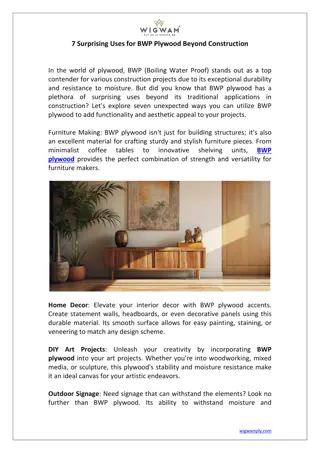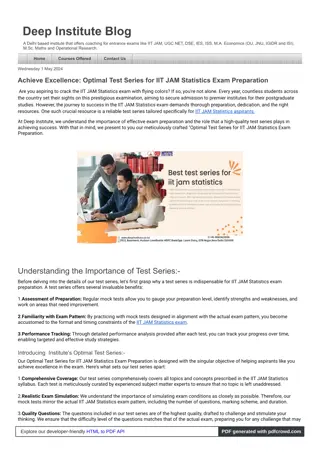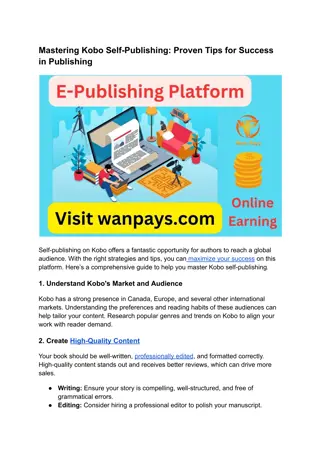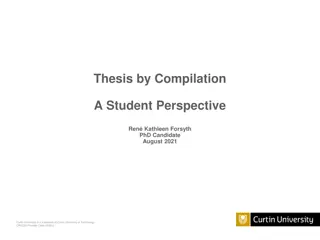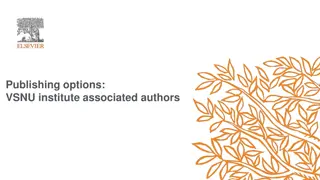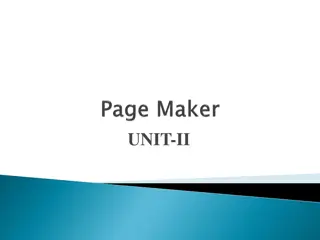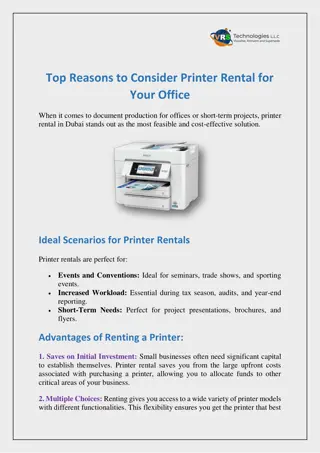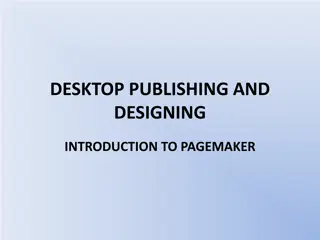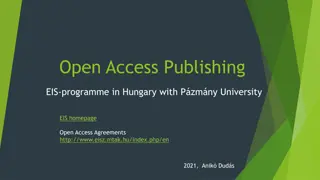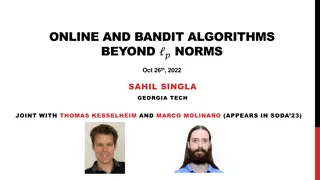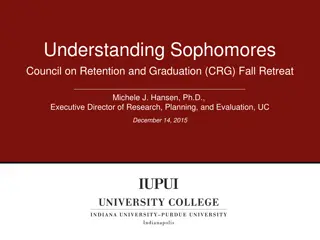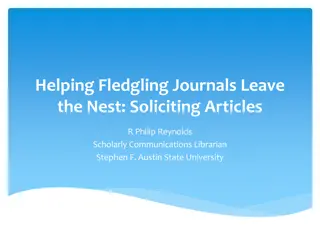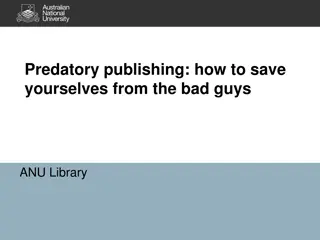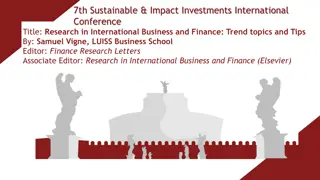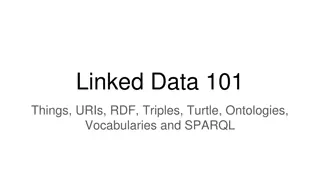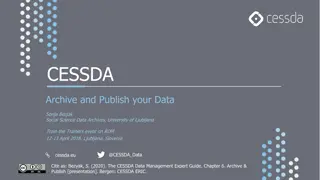Top 10 Things to Consider for Publishing Success in IJSME and Beyond
Discover the essential factors for achieving publication success in the International Journal of Science and Mathematics Education (IJSME) and similar platforms. Explore insights from Peter Liljedahl and gain a deeper understanding of submission trends by country and acceptance rates. Uncover valuable data from the IJSME Publishers Report 2015, offering guidance on optimizing your chance of acceptance through effective research and writing strategies.
Download Presentation

Please find below an Image/Link to download the presentation.
The content on the website is provided AS IS for your information and personal use only. It may not be sold, licensed, or shared on other websites without obtaining consent from the author. Download presentation by click this link. If you encounter any issues during the download, it is possible that the publisher has removed the file from their server.
E N D
Presentation Transcript
TOP 10 THINGS TO CONSIDER IF YOU WANT TO GET PUBLISHED IN IJSME (OR ELSEWHERE) Peter Liljedahl
NIMS & KSME 2017 www.peterliljedahl.com/presentations liljedahl@sfu.ca @pgliljedahl
NIMS & KSME 2017 The objective of this journal is to publish original, fully peer-reviewed articles on a variety of topics and research methods in both science and mathematics education. The journal welcomes articles that address common issues in mathematics and science education curricular dimensions Specific attention manuscripts written by authors whose native language is not English and the editors have made arrangements for support in re-writing where appropriate. and cross- widely. paid more be will to IJSME
IJSME Publishers Report 2015| Oct 2015 | 4 Submissions by Country and Comparison 2011-2015 2011-2016 UNITED STATES 18% TURKEY 18% others 28% Others 29% TURKEY 16% CANADA 1% UNITED STATES 18% NIGERIA 2% INDONESIA 2% SOUTH AFRICA 2% IRAN 2% SOUTH AFRICA 2% TAIWAN, REPUBLIC OF CHINA 8% INDIA 4% SPAIN 2% CHINA 2% TAIWAN, REPUBLIC OF CHINA 7% AUSTRALIA 5% SWEDEN 2% GERMANY 3% KOREA, REPUBLIC OF 3% IRAN 2% ISRAEL 3% MALAYSIA 2% CHINA 2% INDIA 3% AUSTRALIA 4% GERMANY 2% KOREA, REPUBLIC OF 3% MALAYSIA 3% SPAIN 3% ISRAEL 3%
IJSME Publishers Report 2015| Oct 2015 | 5 Acceptance by Country and Comparison 2011-2014 2011-2016 others 20% UNITED STATES 22% MALAYSIA 1% others 19% NETHERLANDS 2% ITALY 1% UNITED STATES 24% SWEDEN 2% NETHERLANDS 2% TAIWAN, REPUBLIC OF CHINA 11% CHINA 2% SPAIN 3% SINGAPORE 2% CANADA 3% CHINA 2% ISRAEL 7% TAIWAN, REPUBLIC OF CHINA 11% UNITED KINGDOM 3% CANADA 2% TURKEY 7% SPAIN 2% FINLAND 3% KOREA, REPUBLIC OF 4% GERMANY 5% AUSTRALIA 6% UNITED KINGDOM 3% GERMANY 7% ISRAEL 6% FINLAND 3% TURKEY 7% AUSTRALIA 6% KOREA, REPUBLIC OF 3%
IJSME Publishers Report 2015| Oct 2015 | 6 Downloads (as of Aug 2015) 80000 71308 70000 60000 56893 53903 50000 46551 40615 40000 3117433233 30000 23303 20000 13166 8122 10000 4155 2439 399 0 2003 2004 2005 2006 2007 2008 2009 2010 2011 2012 2013 2014 2015
NIMS & KSME 2017 IJSME ESM JMTE MERJ MTL CJSMTE (editorial board since 2010) FMEJ (editorial board since 2014) (editor since 2012) (editorial board since 2011) (editorial board since 2011) (editorial board since 2014) (editorial board since 2008) MORE THAN IJSME
NIMS & KSME 2017 TITLE + ABSTRACT INTRODUCTION (PHENOMENON OF INTEREST) LITERATURE REVIEW (AND THEORY) RESEARCH QUESTION METHODOLOGY RESULTS DISCUSION CONCLUSION RELEVANCE TO LITERATURE RELEVANCE TO PHENOMENON OF INTEREST REFERENCES STRUCTURE OF A GOOD ARTICLE
NIMS & KSME 2017 try to have a clever title that says something memorable about the article NEVER put the country where you did your research in the title: it narrows the interest in your paper. country can be mentioned in methodology EXCEPTION: international comparisons 1. TITLE
NIMS & KSME 2017 the abstract is advertising: it should motivate a reader to want to read it entice them with your results: but phrase them for a lay reader NEVER put a reference in an abstract 2. ABSTRACT
NIMS & KSME 2017 The introduction should tell a reader: how you came to this research. what is the phenomenon of interest. why you care about this research. why the reader should care about the research. The introduction should finish with lay research question. Do not underestimate the value of narrative for this section. 3. INTRODUCTION
NIMS & KSME 2017 The literature review is not a place where you tell the reader the results of every research paper related to your research. It should: be linked and intertwined. illuminate in more detail the hole that your RQ is going to fill. present a vocabulary that you will use. potentially introduce us to the theoretical framework (but may not be explicit about it). 4. LITERATURE REVIEW
NIMS & KSME 2017 The research question should emerge naturally out the literature review. The reader should say of course upon seeing it. The research question should: fill a gap in the research. apply existing theory in a new context look at a phenomenon from a new perspective. not be answerable with a yes/no response. 5. RESEARCH QUESTION(S)
The methodology should have enough details that a reader can either make sense of your results within their own setting or recreate the research. It should: tell us the setting (including country). tell us who the participants are. tell us about your instruments. tell us what the data will be. tell us how you will analyse the data (this is where you can reveal the theoretical framework). NIMS & KSME 2017 6. METHODOLOGY
NIMS & KSME 2017 If you are doing a qualitative study I recommend that you put results and discussion together in one section and intertwine them. If you are doing a quantitative study I recommend that you put your results in a table then discuss them. DO NOT narrate the contents of the table. 7+8. RESULTS and DISCUSSION
Use your theoretical framework in transparent ways. DO NOT use a complex framework to see/say simple things. DO NOT be to shallow in your analysis. There is a difference between DOING research and WRITING research. Know the difference between grounded theory and constant comparative method. If you are truly writing in grounded theory I suggest you send it to a journal that specializes in this. NIMS & KSME 2017 7+8. RESULTS and DISCUSSION
NIMS & KSME 2017 Remind the reader what the questions were. DO NOT cut and paste. Answer your research question. 9. CONCLUSIONS
NIMS & KSME 2017 Talk back to your literature. How do your findings contribute to the existing work in this field? What extensions or adaptations do you propose? What parts of the literature mapped well onto your context? 10. RELEVANCE TO LITERATURE
NIMS & KSME 2017 Talk back to the thing that motivated you to do your research. What have you learned that furthers your agenda? What have you learned that furthers the agenda of mathematics education? DO NOT be flippant with implications (better to leave them out). 11. RELEVANCE TO THE PHENOMENON OF INTEREST
NIMS & KSME 2017 Follow the format specified by the journal. Make sure that ALL references follow the same format be careful with cut and paste. 12. REFERENCES
NIMS & KSME 2017 READ your paper. Get it proofread if needed. Follow the instructions! BLIND your paper! If you are asked for name, title, and abstract in meta- data DO NOT include it in the paper. PREVIEW the file that is created. 13. JOURNAL SUBMISSION
NIMS & KSME 2017 DO what they have asked or NOT. Either way write a well organized letter or a table back to the reviewers detailing how you responded to their comments (or not). 14. RESPOND TO YOUR REVIEWERS
NIMS & KSME 2017 TITLE + ABSTRACT INTRODUCTION (PHENOMENON OF INTEREST) LITERATURE REVIEW (AND THEORY) RESEARCH QUESTION METHODOLOGY RESULTS DISCUSION CONCLUSION RELEVANCE TO LITERATURE RELEVANCE TO PHENOMENON OF INTEREST REFERENCES STRUCTURE OF A GOOD ARTICLE
JEREMY KILPATRICK (JRME, volume 16, issue 3)
Editors and reviewers are reputed to be busy people, but that is a fiction. The JRME editors and reviewers lead dreary lives of unremitting sloth. If you plan to submit a manuscript to the JRME, here are several easy ways that you can bring stimulation and challenge to some idle minds.
First, do not bother to read the journal itself and pay no attention to what the Publication Manual of the American Psychological Association (Third Edition) has to say about preparing a manuscript. Be a free spirit. Try to convey the impression that you are not a person to be bothered with petty details of style and format.
Second, see if you can give your manuscript the portentous tone of a dissertation or project report. Start with the title; it should be as long as possible. Mention every variable you studied, along with the names of the instruments you used. If the title still seems too short, try adding" A Report of a Study Designed in an Attempt to Investigate Various Factors That Might Be Associated With .... "If that is not enough, add the name of the institution and the city where you did the study.
Either omit the abstract altogether (you're a busy person, right?) or, better, stretch it out to at least 250 words so that you can allude to results that are not included in the body of the report, thereby providing the reviewers with more of a challenge. In setting up tables and figures, just remember that they should not be easily interpreted on their own. Verbatim copies of computer printouts usually make wonderful tables. If a table seems too stark, you can add a dozen or so cryptic footnotes. Most tables should be discussed entry-by-entry in the text, but the virtuoso writer will include at least one table or figure that is not 'cited anywhere.
Third, do not let the organization be obvious. Avoid headings or subheadings that might reveal too much. Use Introduction at the beginning and put Results somewhere in the middle, if you wish, but report the results all the way to the end, as they occur to you. Aim at a stream-of- consciousness effect. If you want to give the purpose of the study, follow Agatha Christie's style and tell your secret at the end. You can, however, give the manuscript a nice absurdist touch by omitting any statement of purpose.
Finally, do not let anyone else read your manuscript before you submit it. After all, who are you writing for if not yourself? Proofreading the manuscript carefully and letting colleagues look it over might suggest that you were eager to have it published. If you follow the simple suggestions above, you will not need to worry about publication. And you can know the satisfaction of having given some extra work to the editors and reviewers. JEREMY KILPATRICK (JRME, volume 16, issue 3)
NIMS & KSME 2017 www.peterliljedahl.com/presentations liljedahl@sfu.ca @pgliljedahl THANK YOU


